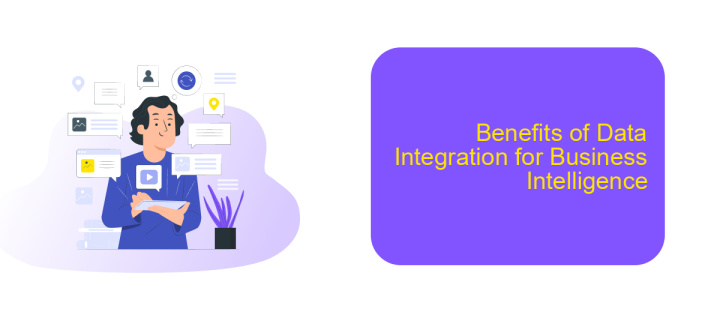Data Integration in Business Intelligence
Data integration in business intelligence (BI) is crucial for transforming raw data into actionable insights. By seamlessly combining data from various sources, organizations can achieve a comprehensive view of their operations, enhance decision-making processes, and drive strategic growth. This article explores the importance of data integration in BI, its methodologies, and the benefits it brings to modern businesses.
Introduction
Data integration is a critical component of Business Intelligence (BI) that enables organizations to consolidate data from various sources into a coherent and unified view. This process is essential for making informed decisions, improving operational efficiency, and gaining competitive advantages. By integrating data, businesses can transform raw data into meaningful insights that drive strategic initiatives.
- Combining data from multiple sources
- Ensuring data quality and consistency
- Facilitating real-time data access
- Enabling comprehensive data analysis
One of the effective tools for data integration is ApiX-Drive, a service designed to streamline the integration process. ApiX-Drive allows businesses to connect various applications and automate data transfers without the need for extensive coding. By leveraging such tools, organizations can achieve seamless data integration, ensuring that their BI systems are always up-to-date and capable of delivering actionable insights.
Data Integration Challenges

Data integration in Business Intelligence (BI) presents several challenges that organizations must navigate to achieve seamless data flow and accurate insights. One primary challenge is dealing with disparate data sources, which often come in various formats and structures. Integrating these diverse datasets into a unified system requires significant effort in data cleaning, transformation, and standardization. Additionally, ensuring data quality and consistency across different sources is a critical task that demands continuous monitoring and validation to prevent inaccuracies and maintain the integrity of BI reports.
Another significant challenge is the complexity of managing real-time data integration. Organizations need to process and analyze data as it is generated to make timely decisions. This requires robust infrastructure and advanced tools capable of handling high volumes of data with low latency. Services like ApiX-Drive can be instrumental in this context, offering automated data integration solutions that simplify the process of connecting various applications and data sources. By leveraging such services, businesses can streamline their data integration workflows, reduce manual effort, and focus on deriving actionable insights from their BI systems.
Data Integration Techniques

Effective data integration is crucial for leveraging Business Intelligence (BI) to its full potential. Various techniques can be employed to integrate data from disparate sources, ensuring that the information is accurate, timely, and relevant for decision-making processes.
- ETL (Extract, Transform, Load): This method involves extracting data from various sources, transforming it into a suitable format, and loading it into a data warehouse.
- Data Virtualization: This technique allows real-time data access without needing to move or replicate data, providing a unified view of information from different sources.
- API Integration: Services like ApiX-Drive enable seamless data integration by connecting various applications and automating data transfer between them.
- Data Warehousing: Consolidating data from multiple sources into a central repository, allowing for efficient querying and analysis.
- Data Federation: This approach integrates data from multiple sources without physical data consolidation, offering a virtual database for analysis.
Choosing the right data integration technique depends on the specific needs and infrastructure of the business. Tools like ApiX-Drive can simplify the integration process, ensuring that data flows smoothly between systems, thereby enhancing the overall efficiency and effectiveness of BI initiatives.
Benefits of Data Integration for Business Intelligence

Data integration is a crucial component of Business Intelligence (BI) that enhances decision-making by consolidating data from various sources into a unified view. This harmonization of data allows organizations to gain comprehensive insights and make informed decisions based on accurate, up-to-date information.
One of the primary benefits of data integration in BI is the elimination of data silos. By integrating disparate data sources, businesses can ensure that all relevant information is accessible and analyzable, leading to more holistic and strategic insights. Additionally, data integration improves data quality by standardizing and cleansing data, which reduces errors and inconsistencies.
- Enhanced decision-making through comprehensive data analysis
- Elimination of data silos for unified data access
- Improved data quality and consistency
- Increased operational efficiency
- Real-time data availability for timely insights
Services like ApiX-Drive facilitate seamless data integration by connecting various applications and automating data workflows. This not only simplifies the integration process but also ensures that data is continuously synchronized, enabling businesses to leverage real-time data for their BI needs. As a result, organizations can stay agile and responsive in a rapidly changing business environment.
- Automate the work of an online store or landing
- Empower through integration
- Don't spend money on programmers and integrators
- Save time by automating routine tasks
Data Integration Best Practices
Effective data integration is crucial for successful business intelligence. One best practice is to ensure data consistency and accuracy by implementing robust validation processes. This involves standardizing data formats and employing automated tools to detect and correct errors. Additionally, maintaining comprehensive documentation of data sources and integration workflows is essential for transparency and troubleshooting. Regular audits and updates to integration processes can help in adapting to evolving business needs and technological advancements.
Another important practice is to leverage specialized integration platforms like ApiX-Drive. Such platforms can simplify the integration process by offering pre-built connectors and user-friendly interfaces, reducing the need for extensive coding. ApiX-Drive, for example, supports seamless integration between various applications and databases, enabling real-time data synchronization. By utilizing these tools, businesses can save time, reduce errors, and ensure that their data is always up-to-date and reliable. Prioritizing security measures, such as encryption and access controls, is also critical to protect sensitive information during the integration process.
FAQ
What is Data Integration in Business Intelligence?
Why is Data Integration important for Business Intelligence?
What are the common challenges in Data Integration for Business Intelligence?
How can businesses automate Data Integration processes?
What are the benefits of using automated Data Integration tools?
Apix-Drive will help optimize business processes, save you from a lot of routine tasks and unnecessary costs for automation, attracting additional specialists. Try setting up a free test connection with ApiX-Drive and see for yourself. Now you have to think about where to invest the freed time and money!


